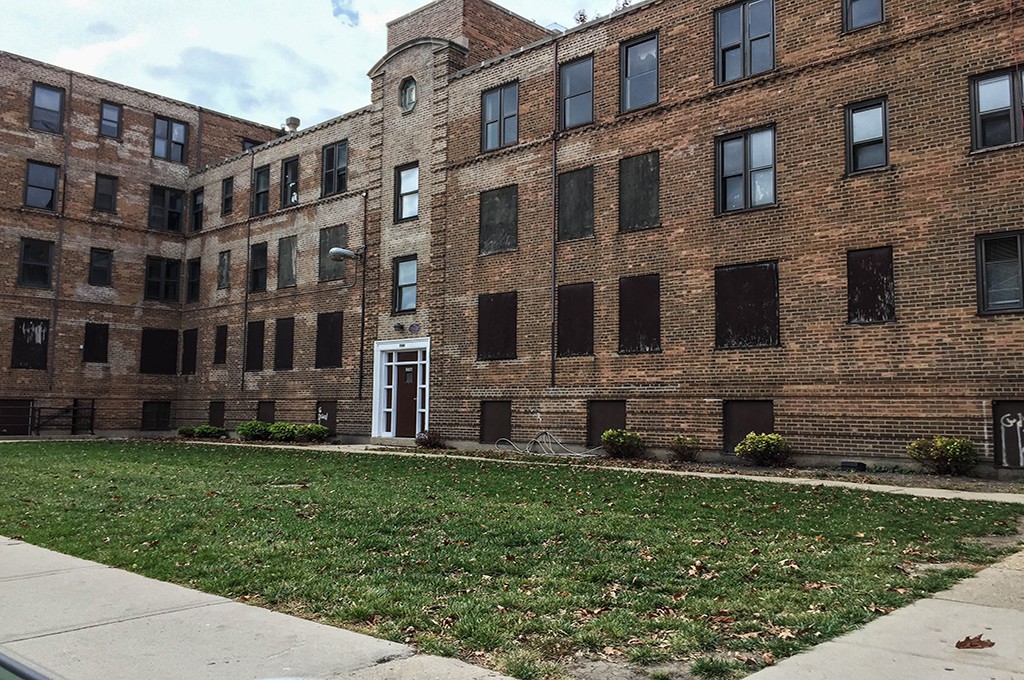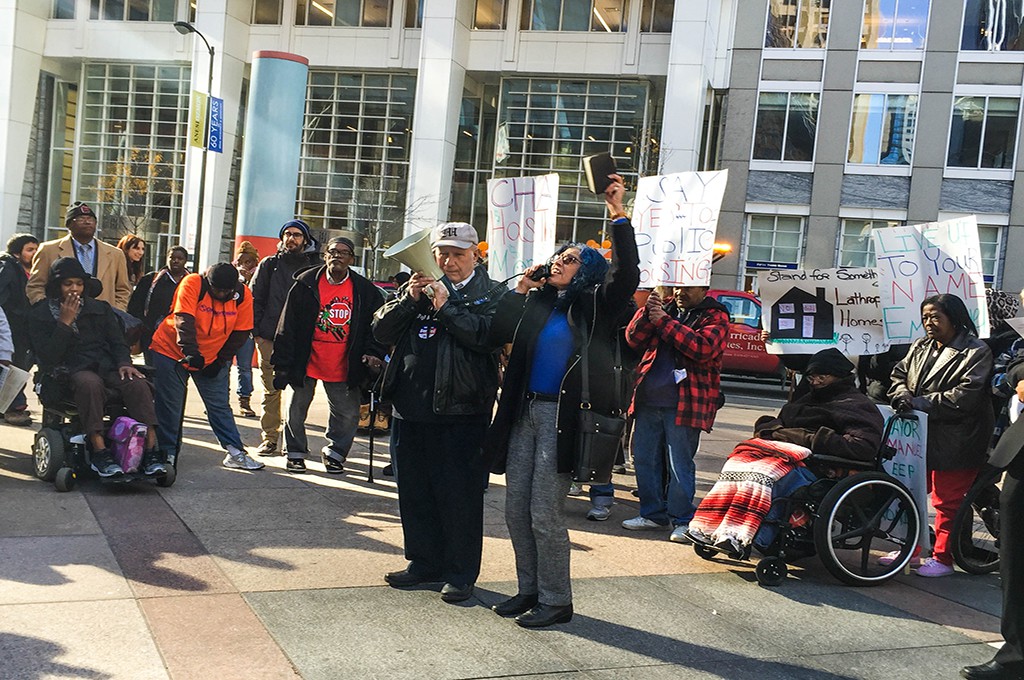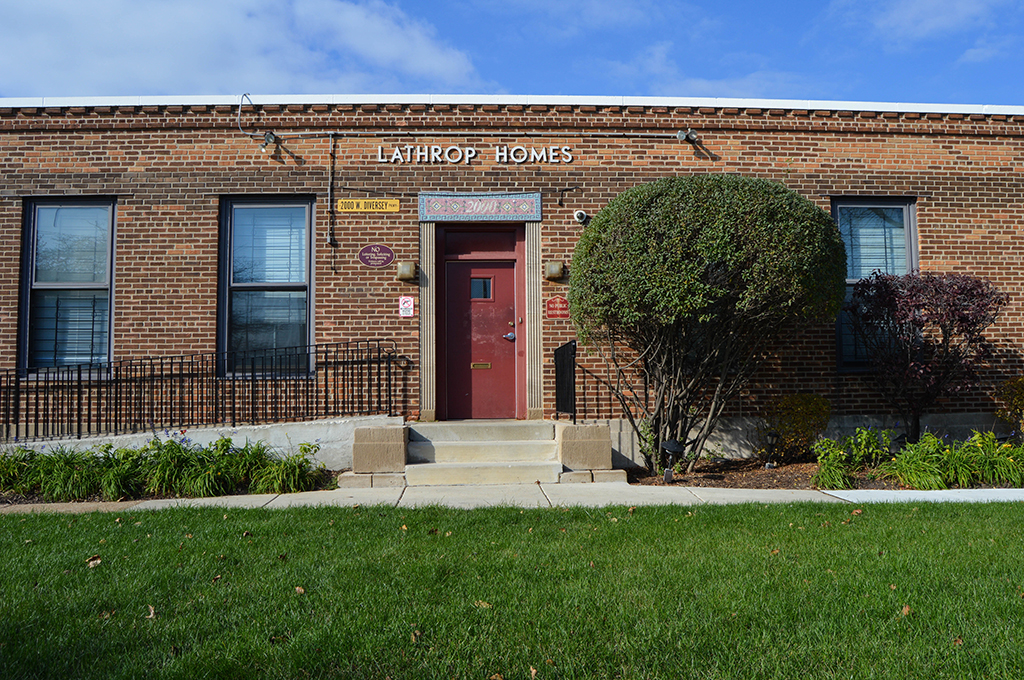By Alexis Myers
Pastor Bruce Ray of Kimball Avenue Church said recently at a housing protest that it is Mayor Rahm Emanuel’s “duty and moral obligation” to stop the Chicago Housing Authority’s violence against low-income communities.
“The CHA has left a trail of suffering and grief as it breaks promises to residents,” Ray said.
Ray was among other religious leaders and housing protesters who marched to City Hall last week to demand that the CHA keep its promise to remodel the Julia C. Lathrop Homes, where renovations have been stalled for over a decade.
Protestors gathered outside of Thompson Center Plaza to protest against the CHA’s treatment of Lathrop Homes. (Alexis Myers/Medill)The new Lathrop would eliminate 525 public housing units and convert 45 percent of units into market-rate housing. The most recent development plan from the project’s stakeholders offers a look into the comprehensive plan.

Many, like Leah Levinger, director of the Chicago Housing Initiative, said she fears that the new market-rate housing strategy would push out lower-income residents in an already affluent neighborhood, which would further segregate Chicago.
“It’s a disservice to the residents who need affordable housing,” she said at the Nov. 9 protest outside Thompson Center Plaza.
Today, 138 families remain at Lathrop’s 925 total units, according to CHA’s most recent Quarterly Report.

“Every time they move a family out, they don’t move a new family in, and that’s how Lathrop has become the ghost town that it is,” Levinger said.
Matthew Aguilar, senior manager of communications at the CHA, said the agency plans to expend $90 million of the development reserve balance this year on capital projects and resident services. Roughly $2.5 million of the development reserves in 2015 will go toward the redevelopment of Lathrop.
J.L. Gross, 63, a disabled veteran, has lived in Lathrop Homes for 26 years, and said the CHA offered people housing vouchers to move elsewhere when they decided to remodel Lathrop, but he didn’t want to leave his community.
[field name=”lathrop homes 360″]
“The developers want to take the property that I live on and bring in more retail and displace low-income people,” Gross said. “Chicago needs more low-income housing than ever because there’s a vast number of people that don’t have a place to stay.”
According to Aguilar, the new Lathrop will strive to achieve many goals, including achieving a quality mixed-income community, a connection to the surrounding community, a model for sustainable development, the preservation of the architectural heritage and an emphasis of the site’s proximity to the river.

An ordinance, introduced two years ago by the Chicago Housing Initiative, “Keeping the Promise,” would ensure the CHA reports to the City Council four times a year, preserve or replace all standing public housing units, circulate more housing vouchers and keep its promises to rebuild replacement housing.
By law, the ordinance would preserve or replace all of the 925 public housing units at Lathrop moving forward, Levinger said.
Brock Grosso, the housing organizer at Access Living, who attended the protest, urged the CHA to take accountability and create more city oversight of its actions.

“We’ve seen what happens when there is very little oversight, like what’s happening to the Lathrop homes,” Grosso said. “It’s unacceptable, and the CHA has taken no responsibility.”
CHA officials said construction at Lathrop could begin by spring of 2016 and continues to work with stakeholders to pursue zoning approvals, financing and implementation plans for Phase I redevelopment.


